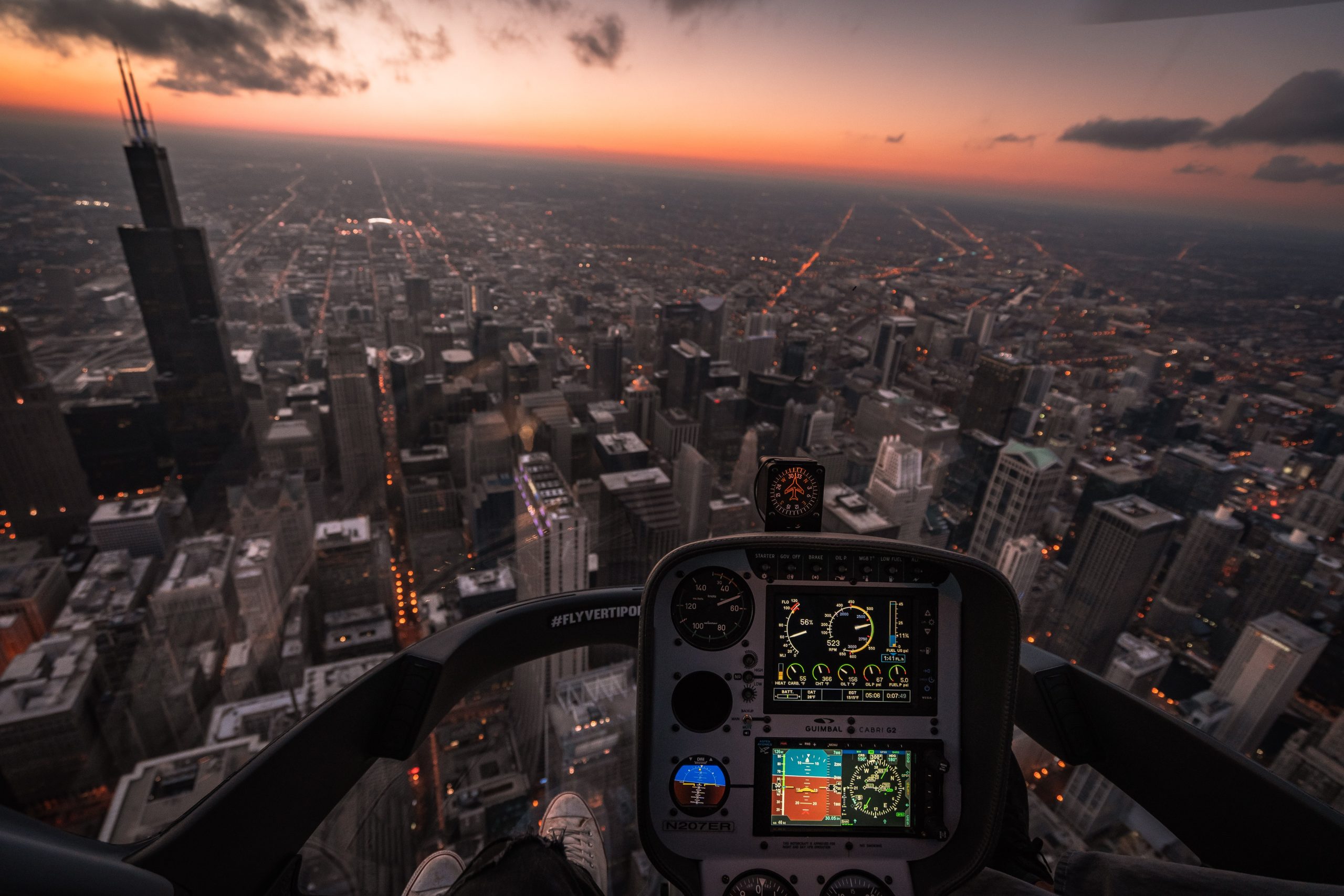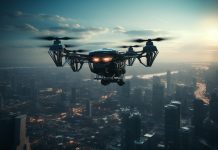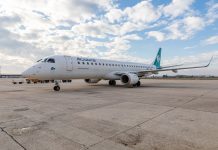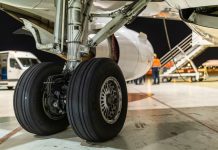To understand how helicopters fly, you have to forget everything you know about airplanes for a moment.
The first and rather obvious difference is visible to the naked eye: helicopters fly thanks to a rotary wing, whereas airplanes fly with fixed wings.
Some history
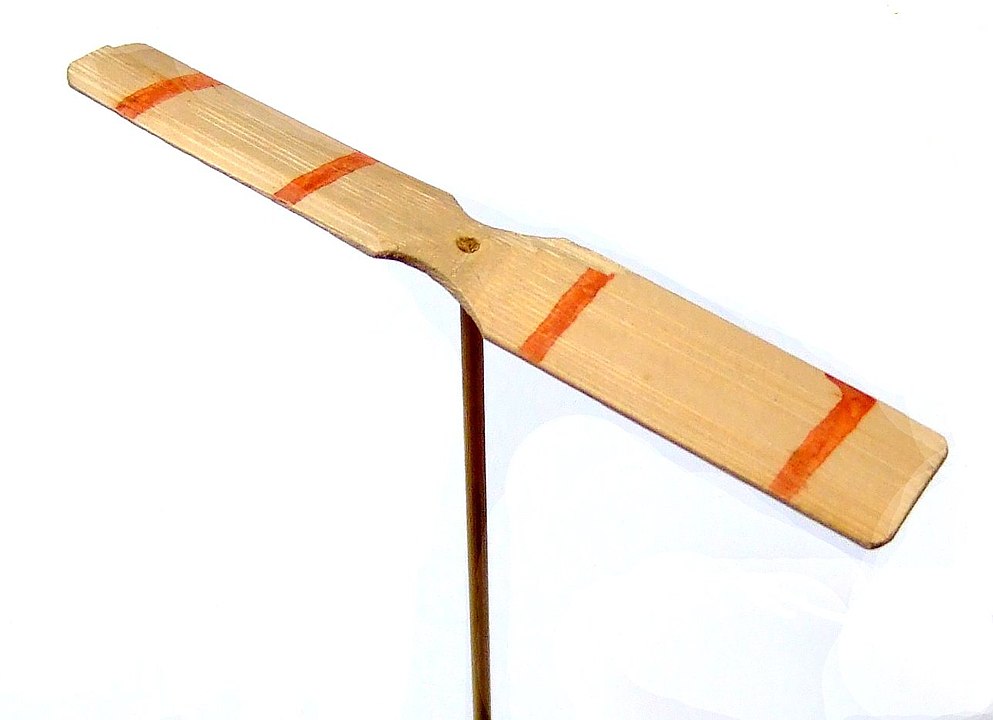
Let’s go back in time for a minute. The concept of the rotary wing dates back to the fifth century BC, when a Chinese craftsman built the first taketombo (known in English as the Bamboo-copter or Bamboo dragonfly), a toy made of bamboo which was able to vertically lift into the air because of its wings.
It was probably thanks to the arrival of this invention in Europe in the fifteenth century that Leonardo Da Vinci developed his design for the aerial screw, the first flying machine in history (which never flew however…).
Over the centuries that followed, many engineers, pioneers and inventors tried to build rudimentary helicopters, but it was only in 1877 that the Italian Enrico Forlanini managed to make one lift to a height of 13 metres.
Helicopters, like airplanes, only developed and became more widespread during the Second World War. The development of helicopters flourished because of one important feature: vertical take-off.
The rotary wing
Unlike airplanes, which have fixed wings, helicopters are rotary-wing aerodynes.
The specially shaped blades of the wing are pitched at an angle to the horizontal plane so that they can plough through the air and create lift, in other words the force that lifts the helicopter and keeps it in the air.
The angle of these blades determines what is known as ‘angle of incidence’ and can adjusted as required.
A helicopter can have two or more blades. Each blade generates its own aerodynamic force, and the sum of all the forces generated by all blades creates the lift.
Helicopters have one main engine which move the rotor, the mechanism that rotates the blades, creating a displacement of air that overcomes the force of gravity and makes the helicopter lift off the ground.
The rotor and the tail rotor
The rotor is the most important element of the helicopter because it has 3 fundamental tasks:
- it generates the lift to support the helicopter in the air
- it generates the propulsive force and overcomes the aerodynamic drag
- it generates the forces necessary for the longitudinal and transverse control of the helicopter.
In an airplane in contrast, these tasks are assigned to three different components: the wing, the propeller and the stabilisers.
Located on the tail of the helicopter is a tail rotor, or an anti-torque rotor, in order to counteract the yaw (rotations on the vertical axis).
Piloting a helicopter
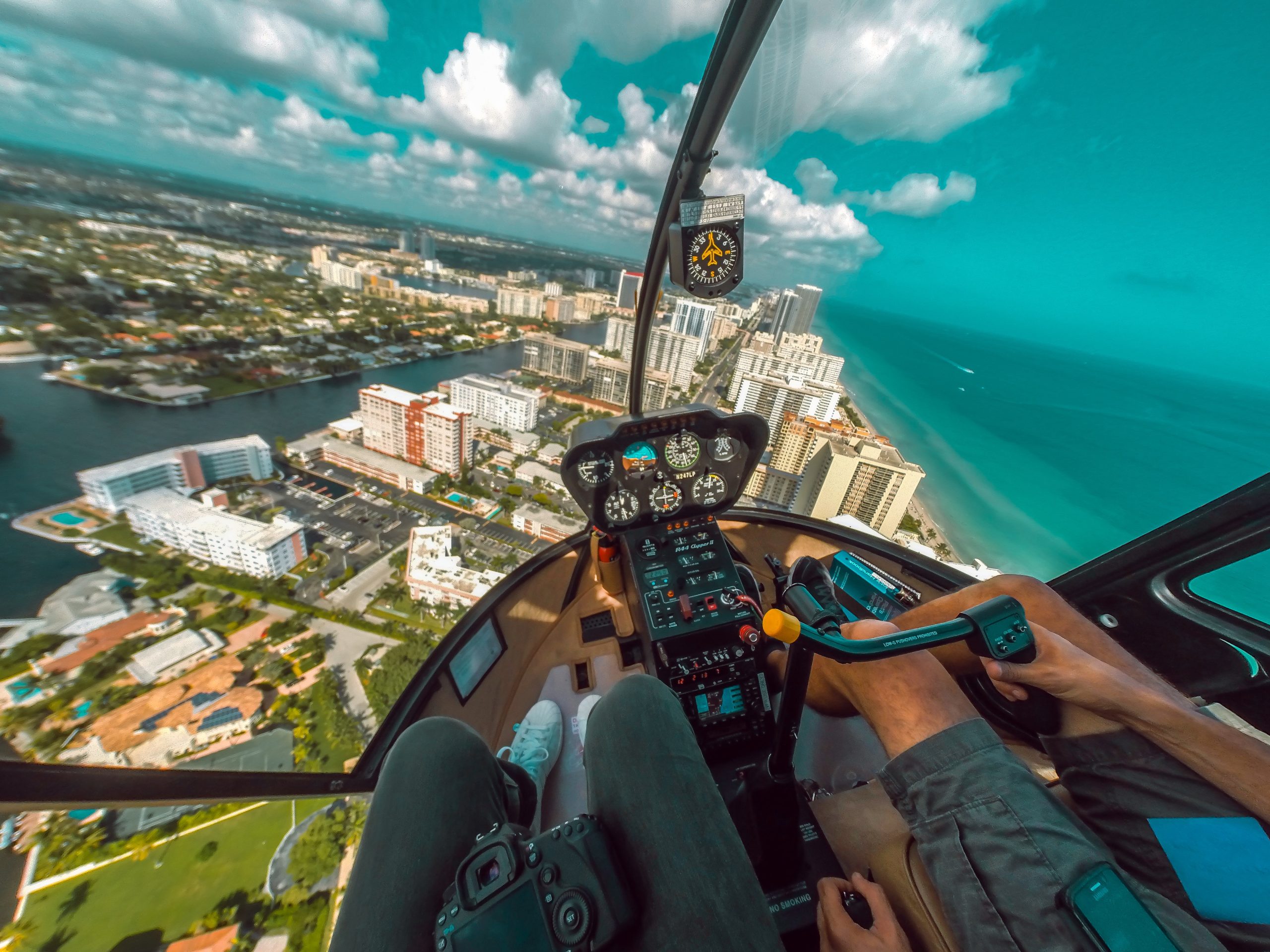
Piloting a helicopter is completely different to piloting an airplane.
Besides the horizontal and lateral distribution of the helicopter and the flight direction, it is necessary to adjust the engine power and direction of the blades.
The controls of a helicopter are:
Collective | left hand: controls the pitch angle of all the main rotor blades collectively to adjust the thrust upwards
Cyclic | right hand: a control stick that changes the pitch angle of each main rotor blade depending on its position in the cycle
Anti-torque pedals: control the tail rotor and the direction of the nose.
We hope we’ve managed to give you an idea of how different helicopters are to airplanes.
Now, dear #avgeek friends, if you don’t mind, let’s go back on board our beloved Embraer planes.

